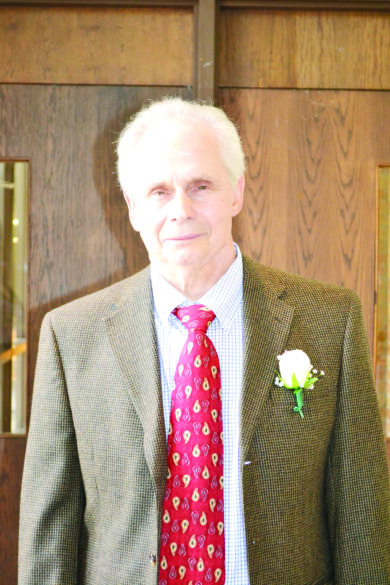THEOLOGY AT THE MOVIES
By James Tomek, Ph.D.
How do we read “Unorthodox,” a recent four-part series on Netflix of a woman, Esty, who flees from a Hasidic community in New York in search of a new community in Berlin? Is the film about the problems of Jews to maintain their culture in the “diaspora” – the land outside of Palestine/Israel? Esty rebelling against the Hasidic culture? About how women are imprisoned in their religious cultures? Do we have the right to “educate” women and men who live “happily” in a culture that could be repressive? Ultimately, do we really learn anything specific about Hasidic culture other than seeing the stark clothing and witnessing devotions without understanding the words? Can we, in turn, question our Catholicism about some of its customs? We are all in the diaspora – “scattered” from our origins seeking security.

In “Unorthodox,” Esty, escapes an unhappy marriage and flies to Berlin where she tries to fit in with a group of student-musicians. Flashbacks reveal how she was raised by her grandmother in a Hasidic community in Williamsburg, Brooklyn; entered into a prearranged marriage with Yanky Shapiro; was naive in the sexual facts of life; became pregnant, and at present, decides to flee the closed community to go to Berlin. Why? Her mother, excommunicated earlier from the community, had gone to Berlin where she now lives with her partner and works as a nurse.
The Hasidic (meaning pious/piety) form of worship started in the 18th Century in Poland. In the face of persecutions, the Hasidic Jews devoted themselves to preserve their form of worship. The black suits and head wear were ways of reminding themselves who they were, especially in the diaspora. The Williamsburg community people are more recent descendants of the Satmar community in Hungary, preserving their religion from the horrors of the World War II Holocaust.
Is Esty a descendant of the biblical Esther? Esty, like Esther, is a heroine in a foreign land. The book of Esther is about Jews living in Persia after the Exile in 486 BCE. The King chooses Esther, a Jew, to replace his first wife as Queen. Esther’s cousin, Mordecai, enrages the current Prime Minister, Hamon, who wants to annihilate all the Jews. Mordecai convinces the King of Hamon’s evil plot. The Jews are accepted and Hamon is executed. The Jews celebrate their victory over death in a foreign land with the Feast of Purim. The Talmud, ethical commentaries on the Hebrew Scriptures (in a way, a Jewish New Testament), is ambiguous about Esther. It is a difficult book to love since it is about vengeance and with little or no mention of God’s providence.
Is our Esty a new Esther in a foreign land? She meets with musicians studying in a Berlin conservatory. In an early outing, she enters a lake, and joyfully, baptismally takes off her sheitel, a wig used to hide her hair when out in public. She has an intimate relation with one of the group and finally is admitted to take a test to enter the conservatory. She finally chooses to sing a Yiddish folk song for her audition. She is pursued in Berlin by her equally naive husband Yanky, and a relative, Moishe, who is equally at home in Hasidic ceremonies as well as in capitalistic casinos and bars. Esty refuses Yanky. Moishe, at first aggressive in wanting to bring Esty back, undergoes his own baptism as he seems torn between the two cultures, seen in his symbolic undressing and wading in the Spree.
Do we have a right to educate people who are happy in a culture or religion that may imprison them? The Jewish community in Williamsburg seems to be getting along very well. Is Esty being deprived of the freedom to grow? Do we have a right to “free” this woman from her religious community? Do we know enough about our own religion?
The Hindu religion has four ways to the divine – four ways of being religious: knowledge (jnana) [study], devotion (bhakti) [ceremonies], duty (karma) [good deeds], and meditation (raja) [prayer]. The Hasidic Jews emphasize devotion. The film succeeds in showing the appearances of this Hasidic community and how its marriages are arranged and the Sabbath celebrated. However, it is short on the “knowledge” part. Why the elaborate headdresses or stremeil for the men? The growth of side locks of hair? What is the meaning of the Yiddish folk song through which Esty wins over her audience?
I prefer the way of “knowledge,” so by that I mean studying why we do certain things in our devotions. Some enjoy the karma or duty – doing good deeds. Others find pleasure worshiping without questioning the whys.
The film “Unorthodox” succeeds in showing appearances of a Hasidic community. But, how do these showings reflect their memories? We are all in the diaspora – away from our origins. Our Catholic way of remembering is in the Mass – not necessarily in the priest’s vestments or shape of the church and altar – but in the scriptures read and the shared meal where we remember Jesus’s sacrifice.
(James Tomek is a retired language and literature professor at Delta State University who is currently a Lay Ecclesial Minister at Sacred Heart in Rosedale and also active in RCIA at Our Lady of Victories in Cleveland.)
